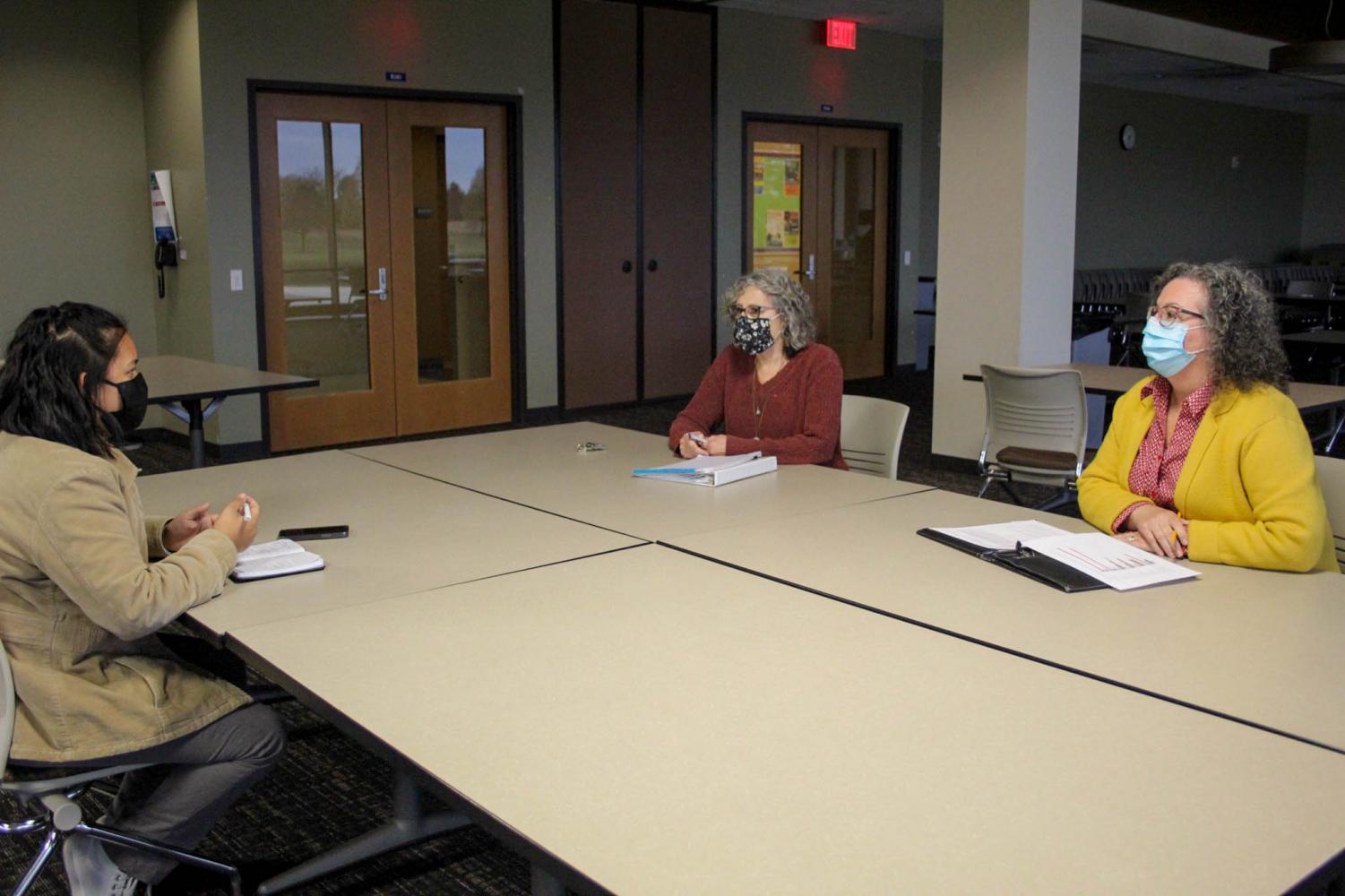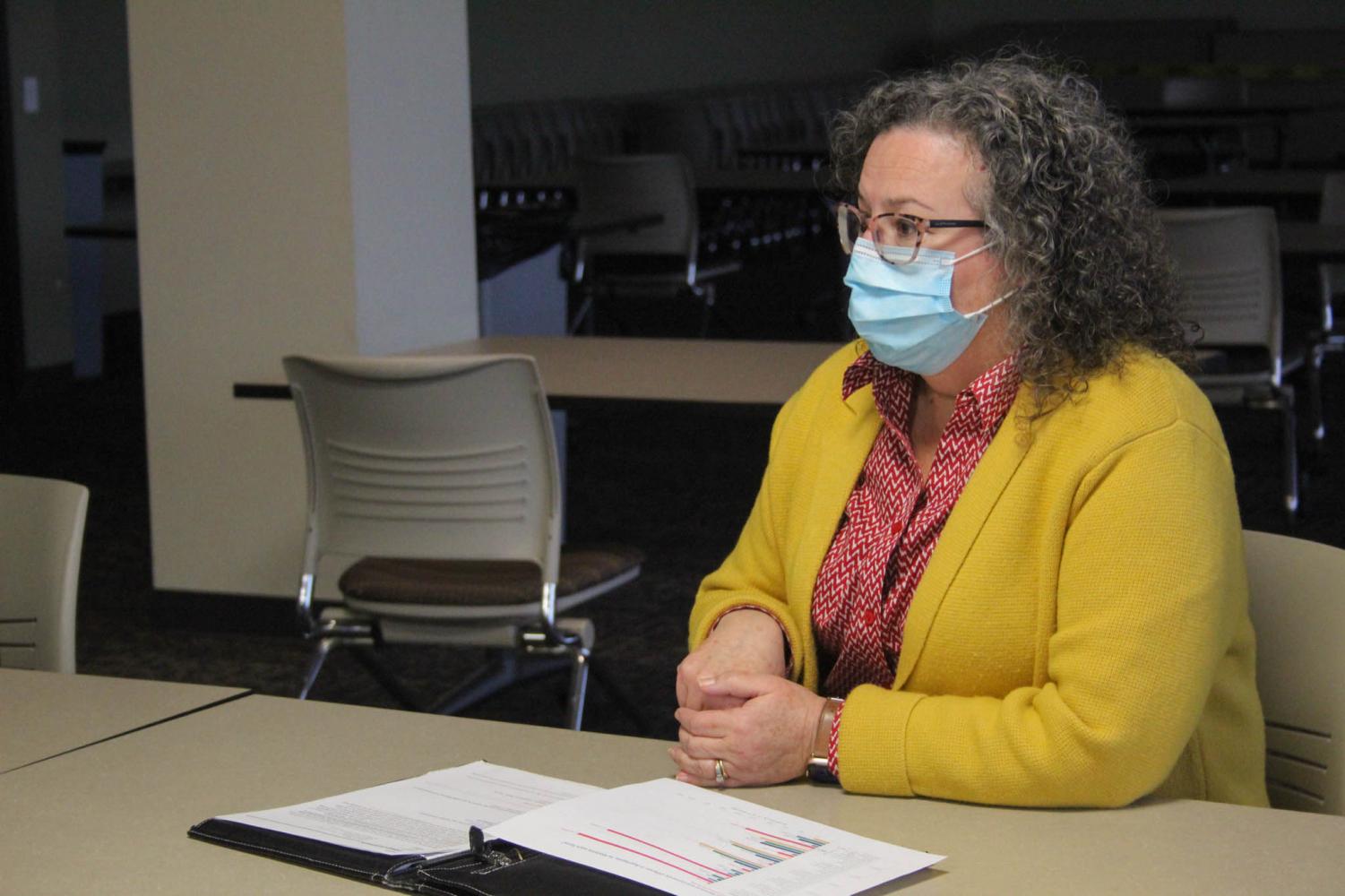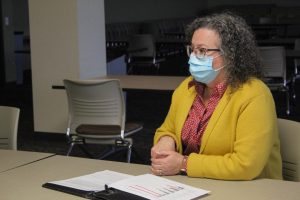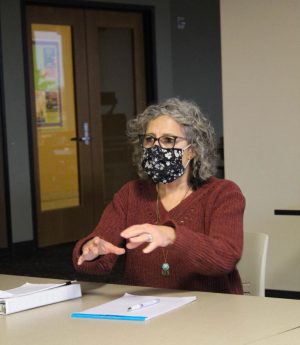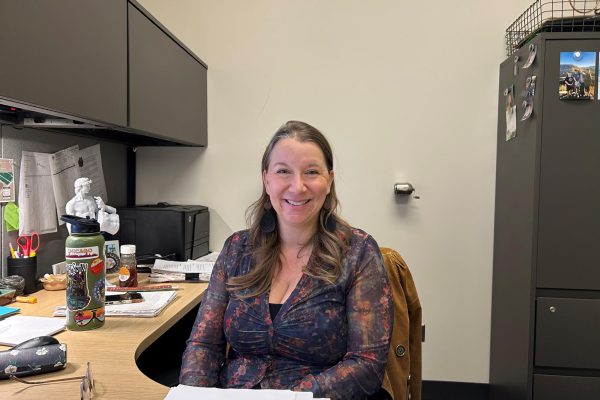Will COVID-19 procedures change in spring 2022?
Are you ready for more face-to-face classes next semester?
Elgin Community College is preparing for possible changes to classroom procedures for the upcoming spring semester. To ensure the safety of students, ECC follows the recommendations given by the Center for Disease Control and Prevention (CDC) regarding COVID-19. Staff members are reviewing current CDC recommendations to comply with any new statements about safety procedures.
The newest change to COVID-19 procedures is that only three feet of distance between students in face-to-face K-12 classrooms is recommended. The initial recommendation was six feet.
To comply with that original recommendation, ECC’s risk manager Robin Cook made a chart that lists the measurements for each room on campus.
“I went through every classroom and lab on campus and measured six-foot distancing,” Cook said. “I had the classrooms set up for six-foot distancing and that’s how capacity was determined. With the distancing, we were able to count and figure out the capacities.”
Although the CDC now suggests a three-foot distance for classes K-12, the suggestions for colleges are different. Annamarie Shopen, assistant vice principal of teaching, learning and student development, stays up to date with the current recommendations for higher education.
“To make sure we are ensuring safety, we have looked to the CDC and the IDPH (Illinois Department of Public Health) for guidelines,” Shopen said. “Right now, in a mixed campus— one that is vaccinated and unvaccinated— the CDC is recommending six-foot distancing. That’s where we are right now.”
ECC follows the vaccine policies released by the state. Shopen said that ECC will continue the six feet social distancing policy until notified otherwise by the CDC. According to Shopen, the continuation of the six feet suggestion impacts class sizes.
“The section capacity has to be reduced to be in alignment with the six feet social distancing,” Shopen said. “The online courses are still the regular section capacity, and the face-to-face courses are at a reduced capacity. This probably impacts our labs the most.”
Although there is reduced availability of face-to-face classes for next semester, there are more spots available than there have been in the past year. Shopen said that currently, 54% of the sections on the schedule for next semester are in-person, as opposed to only 15% this fall.
Rita Elliott, senior director of communications, said the pandemic heavily impacted the number of students enrolled but that there has been an increase in enrollment with more in-person classes available.
Elliott provided data that showed that in the fall of 2019, there were 9,931 students enrolled. The fall 2020 semester showed a drop in the numbers with only 7,882 students. The enrollment rate for the beginning of the fall 2021 semester was 8,057 students, which was about a 2% increase from the fall 2020 semester.
Current enrollment is over 8,400 students, a 2.8% increase from last fall. Shopen said that with this increase in enrollment, teachers are also taking on more sections of their classes.
“The faculty that are having to take on more sections are the ones where the section capacity is reduced,” Shopen said. “It’s because they want to make sure our students are successful and can continue on their path, even though we can only accommodate fewer students in a classroom physically.”
Though classes with fewer students are a part of the current plan to adhere to CDC recommendations, ECC is prepared to adapt to any modifications to come.
“I’m ready to go to three feet at any moment,” Cook said. “All the classrooms were measured to go back to three feet but then it didn’t happen. So, we are prepared at the first sight of that email that comes out to me. We’re ready to make the transition.”

This is my second year at ECC and I am working on finishing my Associate of Arts. I joined the Observer to gain more experience with professional writing...



